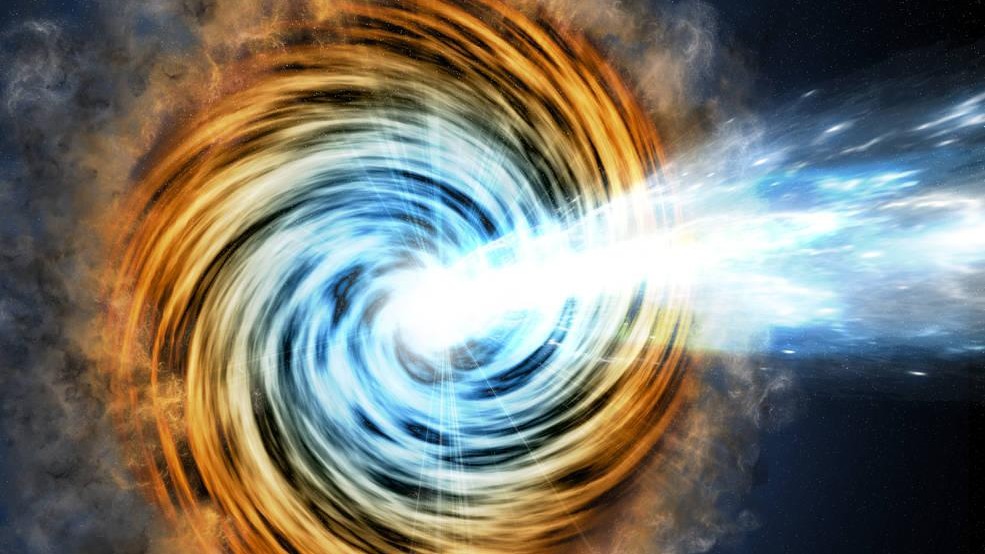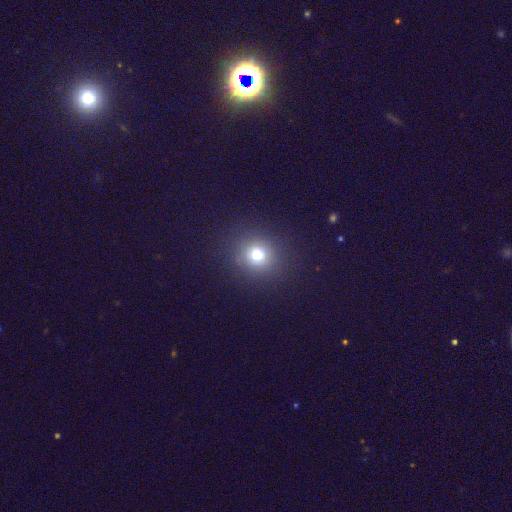Object mistaken as a galaxy is actually a black hole pointed directly at Earth
An object once thought to be a radio galaxy is actually an active black hole that changed angles to point directly at Earth, new research suggests.

In a distant galaxy, a supermassive black hole spewing radiation at near light speed has shifted its angle by a whopping 90 degrees to point directly toward Earth — a sharp turn that's puzzling physicists.
Active galactic nuclei (AGN) are the hungry black holes at the cores of many other galaxies, and they accrete matter and spew powerful jets of high-energy particles known as relativistic jets. AGN are classified according to what part of the AGN is pointed toward Earth.
PBC J2333.9-2343, a large galaxy about 4 million light-years across, was previously classified as a radio galaxy, meaning its AGN's gargantuan jets of radiation were pointed perpendicular to our line of sight. But new research published March 20 in the journal Monthly Notices of the Royal Astronomical Society reclassifies the galaxy as a blazar, meaning the black hole's jets are now pointed directly at Earth. This means the galaxy's jets shifted by a "dramatic" degree, the researchers wrote in the study.
"Our hypothesis was that the relativistic jet of its supermassive black hole had changed its direction, and to confirm that idea we had to carry out a lot of observations," lead study author Lorena Hernández-García, an astrophysicist at the Millennium Institute of Astrophysics, said in a statement.
Related: What's the biggest black hole in the universe?

Hernández-García and colleagues observed PBC J2333.9-2343 across nearly the entire electromagnetic spectrum, from radio waves to gamma-rays. Their observations showed that this galaxy had characteristics typical of blazars: It brightened and dimmed like a blazar, and it had similar jets. Thus, they concluded that the object was most likely a blazar.
The researchers also observed two lobes — areas where an AGN's jets interact with surrounding gas — where some jets had previously made their mark. This blazar's lobes are "very old," however, Hernández-García said, adding that "they are the relics of past activity, whereas the structures located closer to the nucleus represent younger and active jets."
Sign up for the Live Science daily newsletter now
Get the world’s most fascinating discoveries delivered straight to your inbox.
These dormant lobes are evidence that the jets have, in fact, changed direction. It's not totally unprecedented for a galaxy's jets to appear in different places. But in prior examples, there were two sets of lobes, meaning two separate jets turning on and off. For PBC J2333.9-2343, it appears that there is only one source of activity, and it has changed tack.
What caused this great shift? Astronomers are still working that out. Current theories include a galaxy merger, where another large galaxy collided with PBC J2333.9-2343, jostling the orientation of everything within it. More observations are needed to figure out this mystery.
Editor's note: This article was updated on March 30 to correct a typo. Galaxy PBC J2333.9-2343 is 4 million light-years across, not 4-million light-years from Earth; the galaxy is much, much further away.

Briley Lewis (she/her) is a freelance science writer and Ph.D. Candidate/NSF Fellow at the University of California, Los Angeles studying Astronomy & Astrophysics. Follow her on Twitter @briles_34 or visit her website www.briley-lewis.com.










